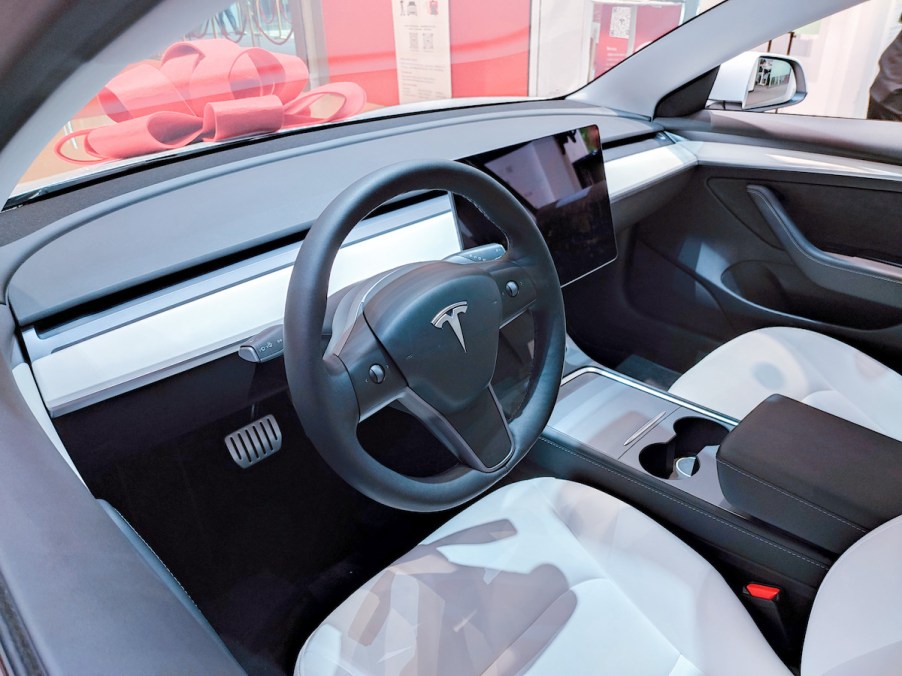
Why Are Manual Transmissions Not a Common Thing for EVs?
The debate over manual transmissions versus automatic transmissions in cars has been a longstanding argument in the automotive community. On the one hand, manual transmissions provide more driver engagement and are less expensive to fix or replace. On the other hand, automatic transmissions are typically easier to use and can improve a vehicle’s gas mileage.
Additionally, the manual transmission is slowly becoming extinct in modern cars. Most EVs have never even had a manual transmission in the first place. Is it due to the unpopularity of manuals in the modern age or something to do with EV hardware?
Why don’t EVs offer manual transmissions?

According to The Next Web, electric vehicles don’t have any need for manual transmissions. In a car with an internal combustion engine, you have to rev the engine for access to its full power and torque. To accomplish that, you need a transmission with varying gear ratios. Even so, these engines have relatively limited rev ranges compared to an EV.
Electric motors deliver power instantly when you put the vehicle into drive. Because of this, an EV needs only a one-ratio single-speed transmission. Additionally, though regular cars typically have a 6,000 to 8,000 rpm limit, many EVs can hit 20,000 rpm. While it is possible to add multiple gears, it’s not really essential for everyday driving.
Only 2 multi-speed EVs exist
A multiple-gear transmission can be used to optimize performance for electric cars. That extra technology comes with a hefty price tag, as we can see from the Audi e-tron GT. It starts at $102,400, and the range-topping RS model retails for $40,000 more.
The Audi e-tron GT comes standard with 522 hp, paired with a two-speed automatic transmission. The first gear is used for managing launch control, while the second top gear is used for improving the vehicle’s range. It’s rated for 238 miles, but driving at higher speeds will lower that number.
Tempting performance upgrades include 20-inch wheels, all-wheel steering, and an adjustable air suspension. The battery pack also comes with an upgraded cooling system to extend its lifespan.
If you can afford the Audi e-tron GT RS, it comes with the two-speed transmission and harnesses 637 hp. When Car and Driver tested the RS model, it reached 60 mph in just under three seconds. Despite that beastliness, C/D still appreciated the RS’ smooth ride and manageable steering.
The Porsche Taycan also has a two-speed gearbox, and it’s slightly more affordable at $82,700. During quick acceleration, the extra gear provides a boost for an even more thrilling launch. According to Porsche, the standard sedan produces 402 hp and can hit 60 mph in five seconds.
Upgrading to the Taycan 4S brings more value with all-wheel drive and 522 hp, plus an adaptive suspension. The Taycan Turbo has less range than both of those lower trims but boasts 670 hp. The Taycan Turbo S Cross Turismo leads the pack with 750 hp and a 0 to 60 mph time of only 2.7 seconds.
Are EV drivers missing out on manual transmissions?
Though manuals provide nostalgia for some drivers, they can be difficult for newbies to master. You have to manually change gears in stop-and-go traffic. If you don’t select the correct gear on hills, your vehicle will probably roll backward.
Still, automatic transmissions come with their own set of headaches if they lack refinement. They can occasionally overshift or get stuck while driving, and the extra components inside automatics make them more expensive to repair. Continuously variable transmissions (CVTs) are also known for their excessive noise, especially on acceleration. Thanks to those drawbacks, we can appreciate the simplicity of the one-speed gearbox.


